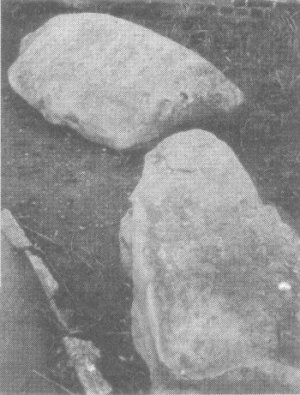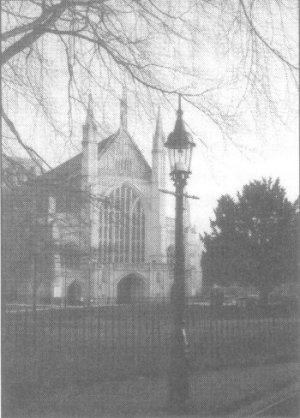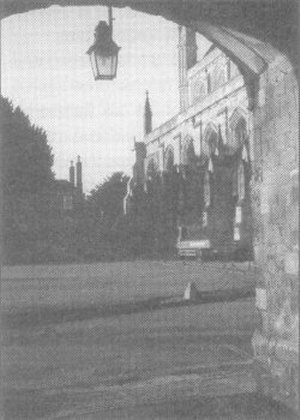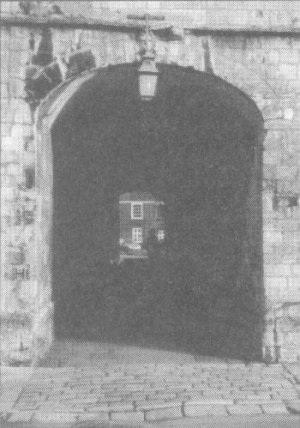Prowling around Winchester - TrustNews Spring 1999
A series of observations by Miss Winifred Powley a resident now in her 90's.
Sarsen Stones

Sarensen Stones, Abbey Gardens
At the upper entrance to Canon Street is a large well-worn dirty-looking brown boulder. This puzzled me as I had noticed others on odd road corners. I discovered they were Sarsen Stones. For the uninitiated, these are large hard sandstone or conglomerate boulders, also known as grey-wethers, though here they are more brown than grey. They are found in chalk counties, mostly in the south of England and were laid down under pressure when the sea covered this area. They are thought to be relics of sand dunes. I had always connected this phenomenon with Wiltshire, and was very surprised to find so many in Winchester. There is one at the entrance to the Close by the Priory Gate and another at the corner of St. Thomas Street and Minster Lane.

The Gas Lamp in Great Minster Street
A gas lamp
The gas lamp situated opposite Minster House in Great Minster Street and facing the west end of the Cathedral, outside the railings of the Cathedral Green is not an ordinary one. It is a rare example of J. and E. Webb's patent Sewage gas destructor. The flame which burns continuously from 2 burners, not only provides illumination but also burns off any gas rising from the sewer to which it is connected. It is now converted to natural gas but still burns.
Curle’s Passage

View from Curle's Passage

View into Curle's Passage
Who was this Curle? When the monastic buildings were still attached to the Cathedral it was customary for the city dwellers to use a 'short cut' through the Cathedral in order to get from the East Gate to Kingsgate, thus saving themselves a long walk. Apparently their behaviour at times was most unseemly so the bishop of that day, Walter Curie (1632 - 1647), diverted this traffic by opening a passage (now called the Slype) through an outside buttress. Even today cut into the stone at the South-West corner of the Cathedral is an inscription - a hand pointing to the West door, and beneath it (in Latin) "To Pray" and one pointing in the other direction - "To Walk".
The Stavanger Stone
This is a large ledger stone or grave stone placed on the site of St. Swithun's original burial place by the north west wall of the Cathedral in part of what was said to be the monks burial ground by the side of the Old Minster.
The story, and I like to think it authentic, tells of a Benedictine monk from Winchester, Reinald by name, who sailed across the North Sea in 1125 and founded the city of Stavanger and built a cathedral which was dedicated to St Swithun. Anyway there seems to have been a connection between the two cities from quite early times. More recently, in 1971, the city fathers of Stavanger sent a large ledger stone inscribed SWITHUN to be placed on the site of the saint's burial place. Once again I had passed it by many times without realising its significance.
